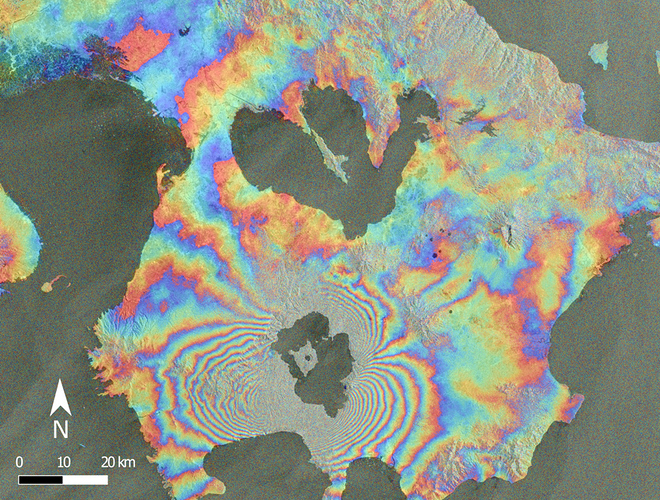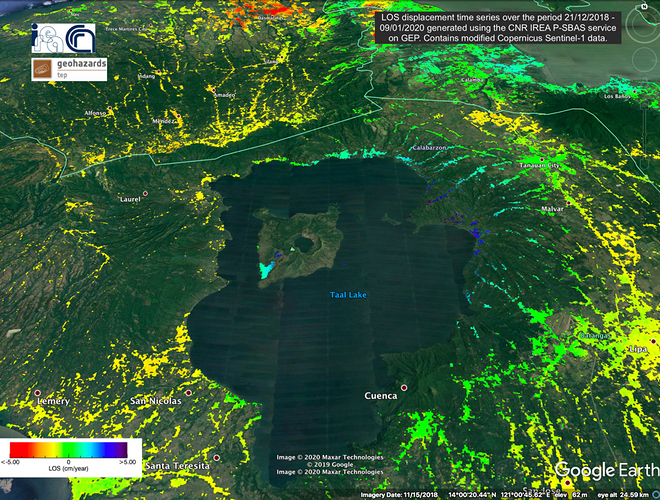As per the Department of Science and Technology (DOST) of PHIVOLCS, cumulative elevation changes of the volcanic edifice based on precise leveling (PL) measurements on March 2019 indicated slightly inflation of the Taal volcano. The observed inflation of the edifice starting on January 2019 was also recorded by continuous GNSS.
Following the seismic triggering on January 2020 (Figure 1), 33 Sentinel-1 SLC products covering the period from December 2018 to January 2020 have been processed on GEP using the CNR IREA P-SBAS service to generate LOS displacement time series (Figure 2). The analysis of time series indicated that uplift is still ongoing, while the phenomena has started on March 2019 (Figure 3). This observation confirms the in-situ measurements of the DOST-PHIVOLCS.
Figure 1. Sentinel-1 differential interferogram (09-01-2020 – 15-01-2020) generated on GEP using DIAPASON. Contains modified Copernicus Sentinel-1 data.
Figure 2. Sentinel-1 LOS displacement rates over the period 21-12-2018 – 09-01-2020 generated on GEP using CNR IREA’s P-SBAS service. Contains modified Copernicus Sentinel-1 data.
Figure 3. Displacement time series over the elevated Taal volcano indicating onset of the phenomena on March 2019.
Acknowledgements: Theodora Papadopoulou (ARGANS c/ESA), Michael Foumelis (BRGM) and Floriane Provost (ESA) on behalf of the CEOS WG Disasters Geohazards Lab.


